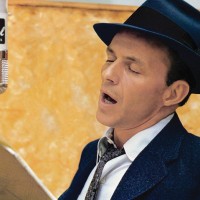Frank Sinatra, known as “Old Blue Eyes” to his fans, is arguably the greatest singer and showman that American popular culture has ever known. What the Beatles were to the youth of the 1960s, the Rat Pack was to their parents. And now, today’s generation will be able to experience Sinatra personally, professionally and musically in the recently released HBO documentary of his life, All or Nothing at All. Approved by the Frank Sinatra estate and directed by Oscar and Emmy-winning director Alex Gibney, this film covers all aspects of Sinatra’s dynamic career and personality both on and off stage.
This documentary is an extensive two-part, four-hour HBO exclusive that covers virtually every significant moment in Frank Sinatra’s life. The first part of the film covers Sinatra’s early years as a lounge singer in Manhattan. Due to his charm, charisma, and piercing blue eyes, he was incredibly popular with the ladies and always had them on his mind. He loved them and they loved him. This was possibly the beginning of his reputation as a notorious womanizer.
This part also details a rise to fame that led him to mingle with the likes of mob bosses and John F. Kennedy. One of the most infamous parts of Frank Sinatra’s life was the ballot-stuffing scandal of 1963 that drew uncomfortable links between himself, the mob, and Kennedy. Sinatra was so well-known for his mob connections that he is said to have inspired the character Johnny Fontane in the 1972 classic The Godfather. However, despite these menacing connections, Sinatra was one of the biggest advocates for civil rights in the entertainment industry.
Underscoring Frank Sinatra’s music career is the film’s soundtrack with the 11-song set list from his 1971 retirement party in Los Angeles. Sinatra has said himself that those tracks best tell the story of his life and career. Included are the titular song “All or Nothing at All,” as well as “Nancy with the Laughing Face,” “My Way,” “Angel Eyes,” and “Try a Little Tenderness.” Alex Gibney ran with this theme and structured the film into chapters separated by performances of those songs from that famous night. If nothing else, one of the best highlights of All or Nothing at All is the top-notch soundtrack and the ingenious way it was used.
Looking past the music, Alex Gibney does a great job of portraying Sinatra’s life through archived interviews and performances. Using this material, Gibney created an autobiographical effect that lets the film’s viewers experience Frank Sinatra on a more personal level. Audiences are able to meet Old Blue Eyes himself, instead of meeting the man who others remember. Since Gibney was granted full access by the Frank Sinatra estate, he was able to use some rare footage. One of the gems from the vault is a duet performance with Elvis Presley. The footage gives true Sinatra fans (especially the younger ones who only remember his later years) a chance to more deeply appreciate one of music’s biggest icons.
Although All or Nothing at All may seem a bit long and exhaustive, it does an amazing job at capturing Frank Sinatra’s life and music. It is a must-watch for all Sinatra fans, as well as fans of music in general. Although he is long gone, Frank Sinatra still remains a deeply relevant performer today, inspiring many musicians and singers with his art and flawless voice.



